Picture demonstrating neural and humoral signalling:
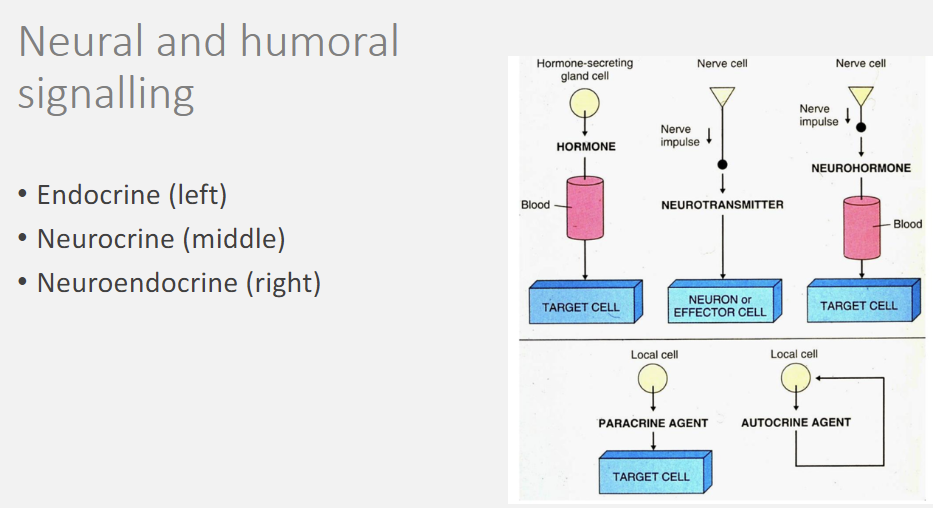
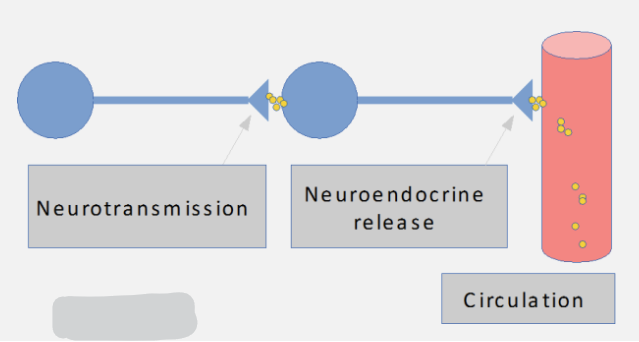
Explain the concept of neurosecretory cells (2), and neuroendocrine integration (2)
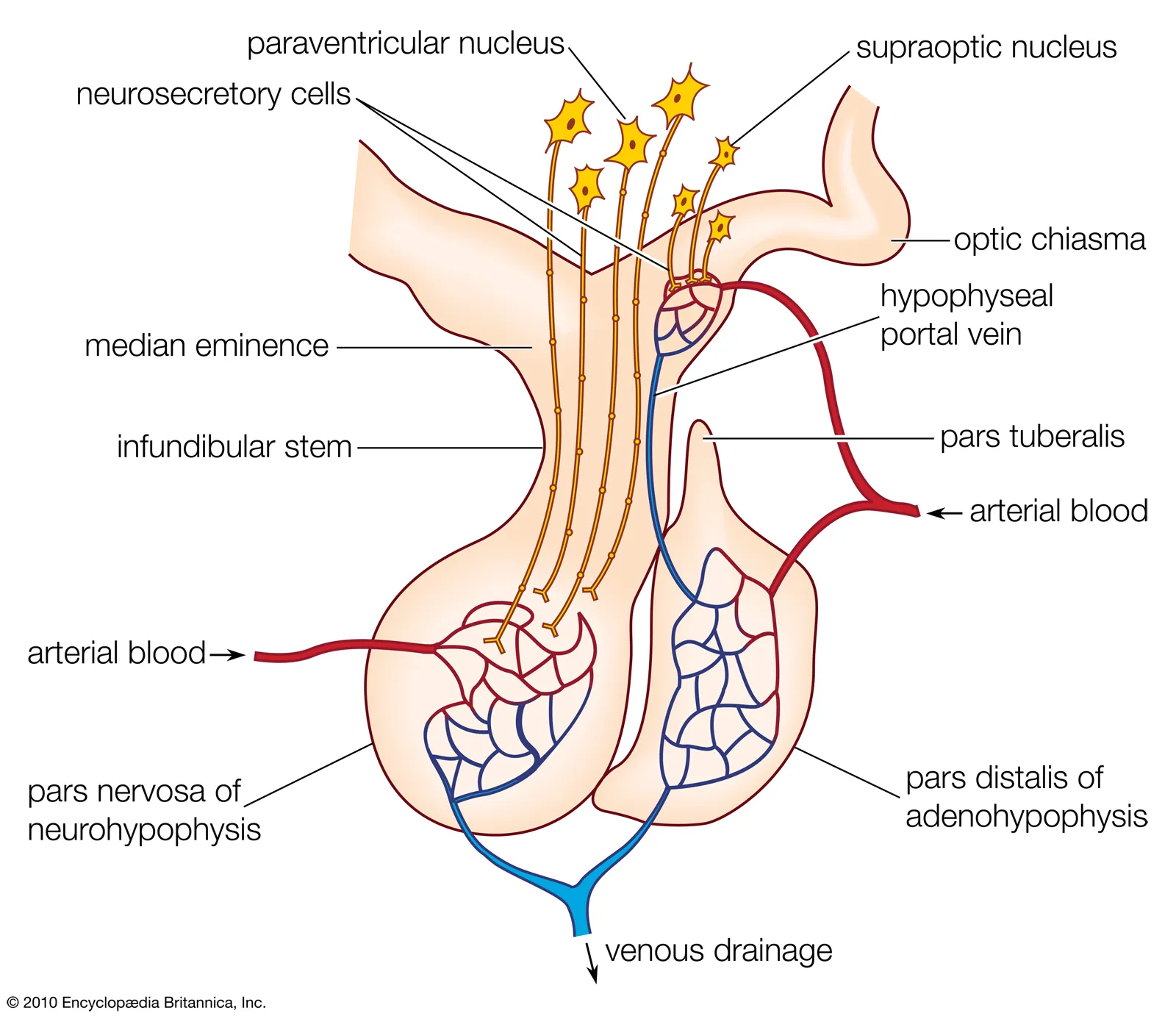
❀Neuroendocrine cells, also known as neurosecretory cells, release hormones from their synaptic terminals into the bloodstream.
❀This release is controlled via synaptic transmission from presynaptic neurons, a process referred to as neuroendocrine integration.
Examples of neuroendocrine cells include:
❀Magno and Parvocellular Neurons of the Hypothalamus: These neurons secrete various hormones that regulate the pituitary gland and, consequently, other endocrine organs.
❀Chromaffin Cells of the Adrenal Medulla: These cells release hormones such as adrenaline and noradrenaline directly into the bloodstream in response to neural signals, particularly during the "fight or flight" response.
Describe the embryology of the pituitary gland. (3)

The embryology of the pituitary gland involves several key steps:
❀Evagination of the Floor of the 3rd Ventricle: This process occurs from the neural ectoderm, forming the posterior pituitary or neurohypophysis.
❀Evagination of Oral Ectoderm (Rathke’s Pouch): Rathke’s pouch is an outgrowth from the oral ectoderm that develops into the anterior pituitary or adenohypophysis.
❀Pinching Off of Rathke’s Pouch: Rathke’s pouch eventually becomes separated from the oral ectoderm, forming the anterior pituitary gland.
Describe the neuroendocrine cells of the hypothalamus. (2+1)
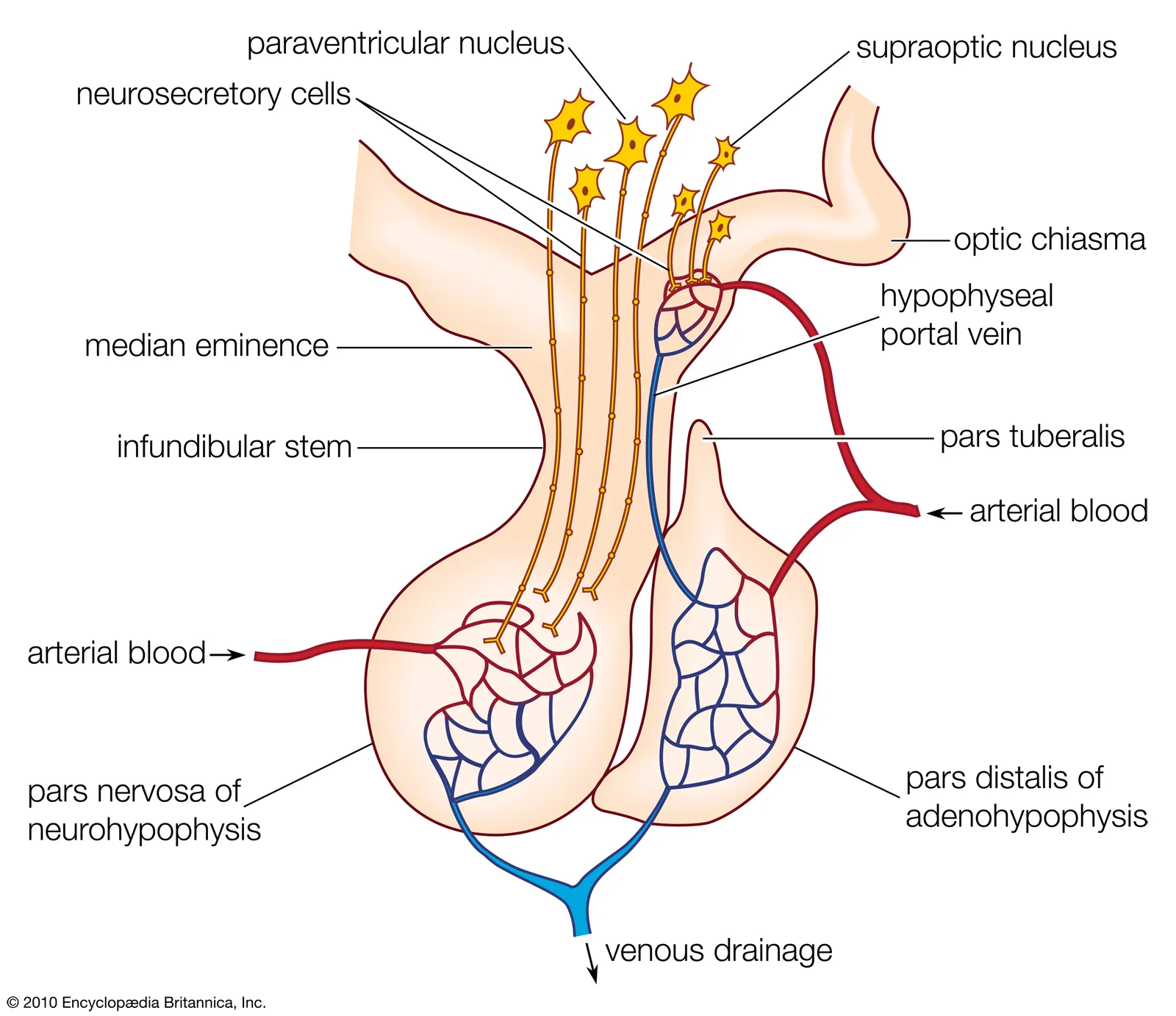
The neuroendocrine cells of the hypothalamus play a crucial role in regulating endocrine function. There are two main types:
Parvocellular Nuclei:
❀These neurosecretory cells release hormones into the capillaries of the median eminence, which is supplied by the superior hypophysial artery.
❀The hormones are then conveyed by portal veins to the anterior pituitary, where they regulate endocrine secretion.
Magnocellular Nuclei:
❀These cells project to the posterior pituitary and release hormones directly into capillaries supplied by the inferior hypophysial artery.
Describe the posterior pituitary hormones and their release mechanism. (2)
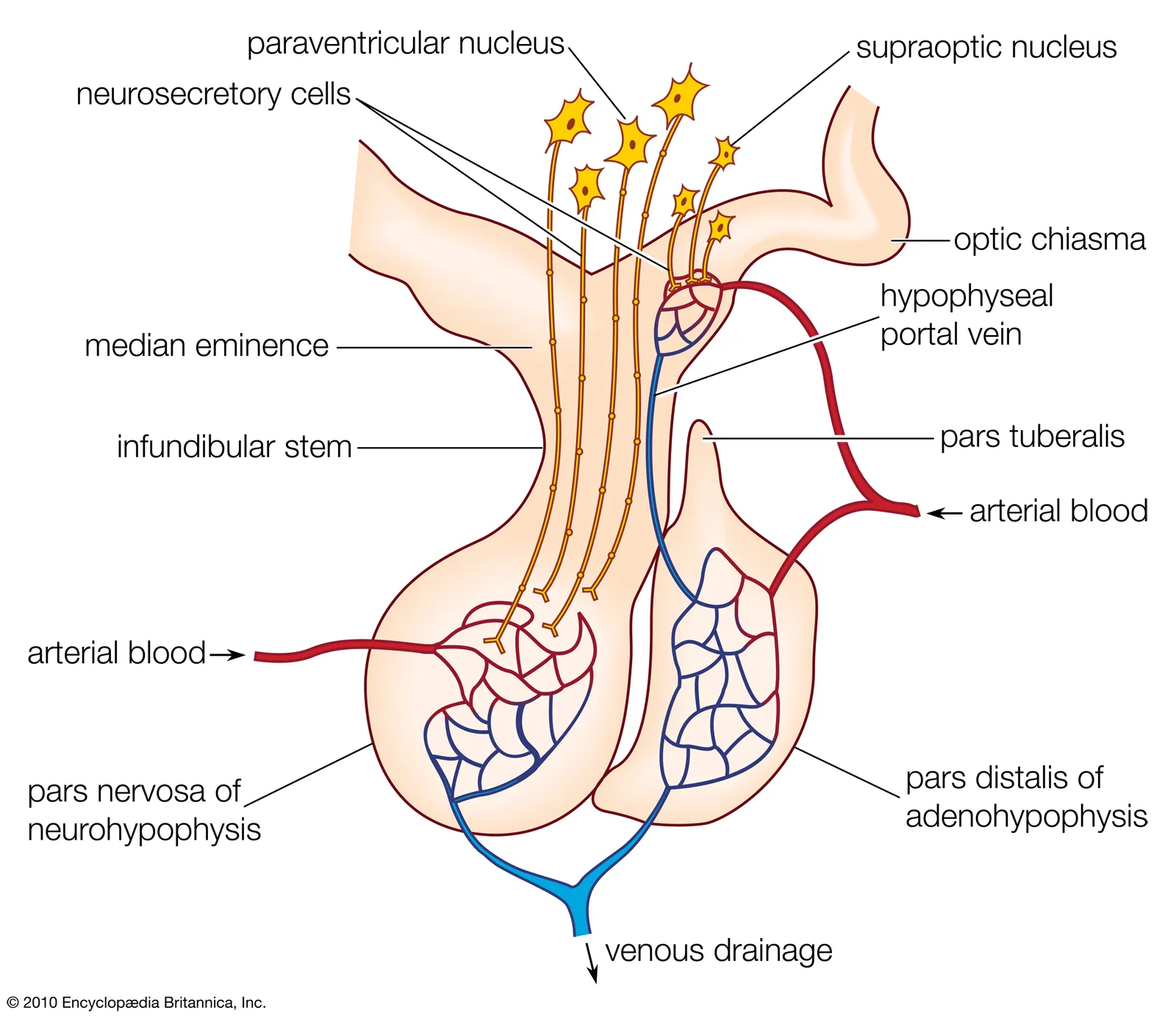
The posterior pituitary (PP) releases two main hormones:
Oxytocin: Responsible for stimulating uterine contractions during childbirth and promoting milk ejection during breastfeeding.
Vasopressin (ADH): Regulates water balance in the body by promoting water reabsorption in the kidneys.
These hormones are essentially extensions of the hypothalamus, stored in hypothalamic neuron terminals. They are released under neural control into hypophysial capillaries, ultimately entering circulation through the inferior hypophysial vein.
Explain the control mechanisms for anterior pituitary secretions. (4)
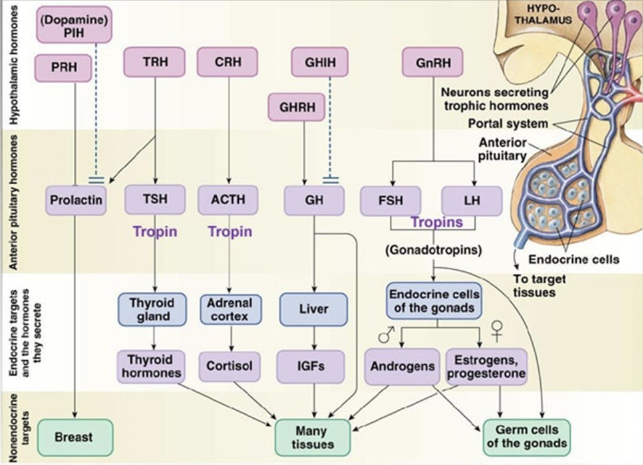
The anterior pituitary gland's secretions are controlled by the following hormones:
Thyroid Stimulating Hormone (TSH): ❀Regulates the activity of the thyroid gland.
❀Its release is stimulated by Thyrotropin-Releasing Hormone (TRH) from the hypothalamus.
Adrenocorticotropic Hormone (ACTH): ❀Controls the secretion of cortisol from the adrenal cortex.
❀Its release is stimulated by Corticotropin-Releasing Hormone (CRH) from the hypothalamus.
What are the functions of growth hormone? (2)
Growth hormone serves the following purposes:
❀Growth and Development: It promotes anabolic processes that contribute to growth and development.
❀Nutritional Status Regulation: It coordinates growth with the individual's nutritional status.
What are the factors that increase and decrease growth hormone secretion? (3), What controls growth hormone secretion through negative feedback? (2)
Increased by:
❀GH-releasing hormone (from hypothalamic parvocellular neuroendocrine cells)
❀Ghrelin (‘hunger hormone’ secreted by endocrine cells of the stomach)
Decreased by:
❀GH-inhibiting hormone (also known as somatostatin, from hypothalamic parvocellular neuroendocrine cells)
Negative feedback control by:
❀GH in circulation
❀IGF-1 in circulation (released by liver in response to GH)
List factors that stimulate (8) and inhibit (5) growth hormone (GH) secretion.
Stimulatory:
❀GHRH
❀Ghrelin
❀Hypoglycemia
❀Decreased fatty acids
❀Fasting
❀Exercise
❀Sleep
❀Stress
Inhibitory:
❀Somatostatin (GHIH)
❀GH (Growth Hormone)
❀Hyperglycemia
❀Increased fatty acids
❀IGF-1 (Insulin-like Growth Factor-1)
Describe the actions of growth hormone (GH). (6)
❀Stimulates production of IGF-1 by liver
❀Increases lipolysis: raises free fatty acids (FFA)
❀Increases gluconeogenesis: raises blood sugar
❀Increases amino acid uptake into muscle, protein synthesis, and lean body mass
❀Stimulates chondrocytes (cartilage cells): linear growth
❀Stimulates somatic growth: increased organ/tissue size
Picture showing osmoregulation: a neuroendocrine reflex
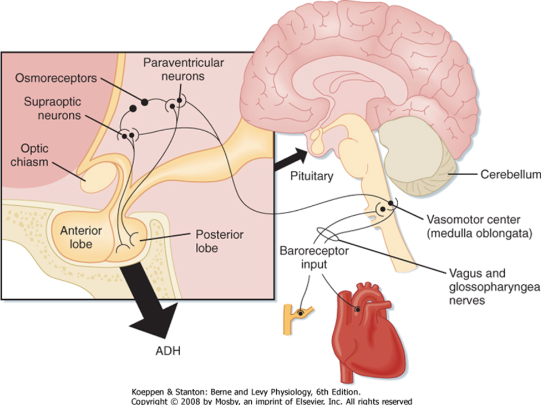
Picture demonstrating the control of GH secretion:
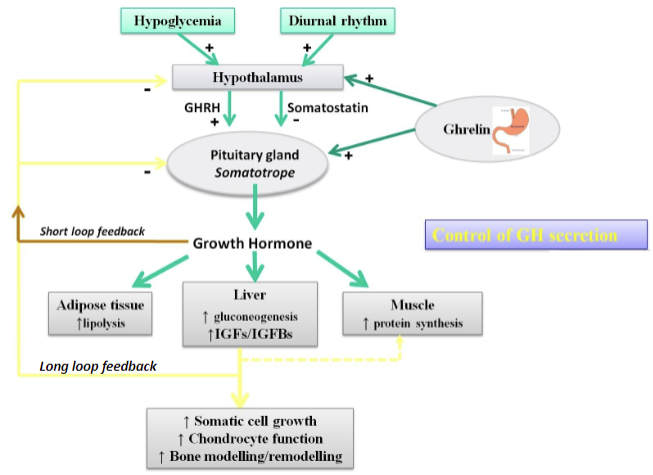
Picture demonstrating diurnal fluctuations of growth hormone:
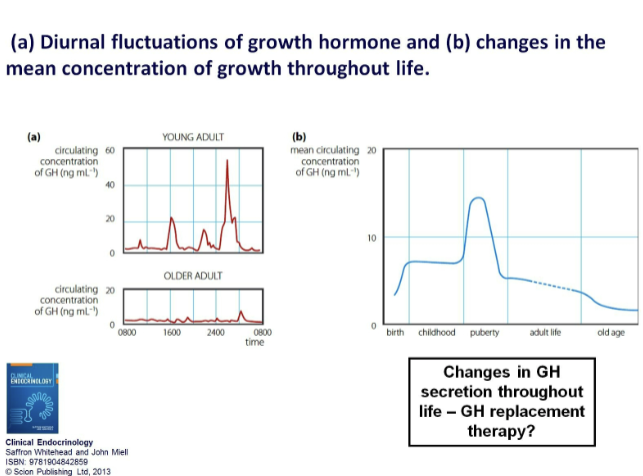
What is acromegaly, and what are its primary causes? (3)
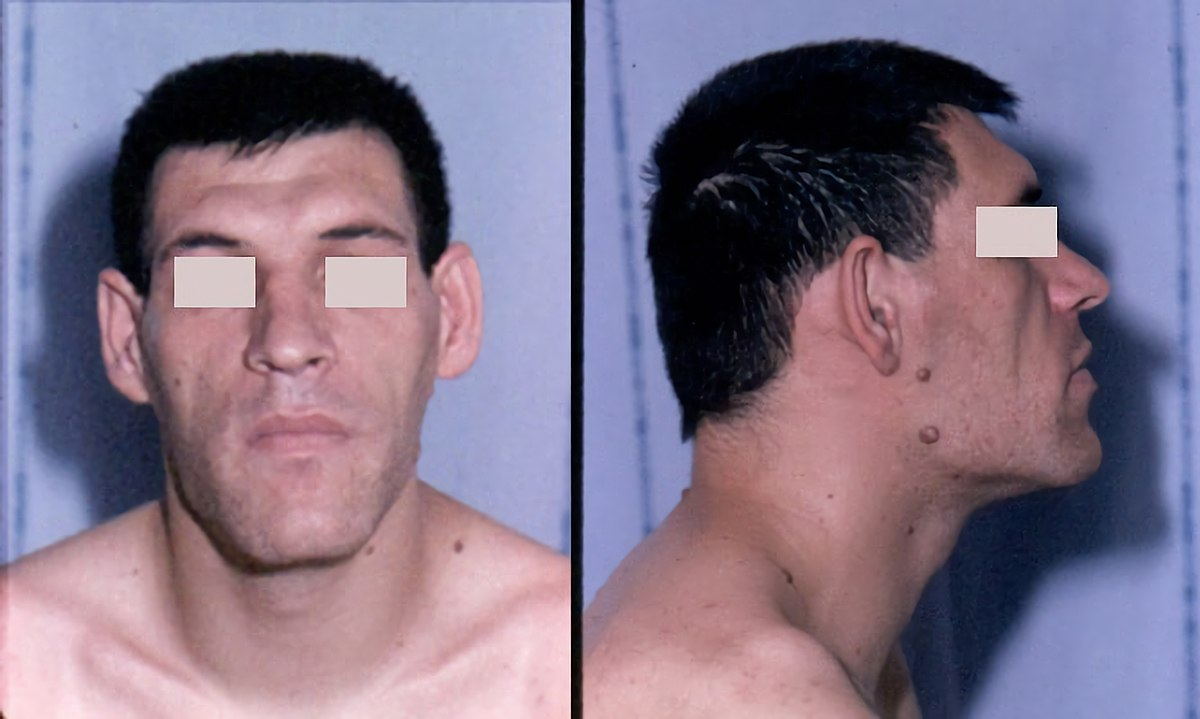
❀Acromegaly is a condition characterized by excess growth hormone (GH).
❀It is most commonly caused by a pituitary adenoma, leading to an increase in GH-secreting somatotropes.
❀Less commonly, it can be secondary to a tumour elsewhere in the body that secretes growth hormone-releasing hormone (GHRH).
What are some metabolic consequences of acromegaly? (3)
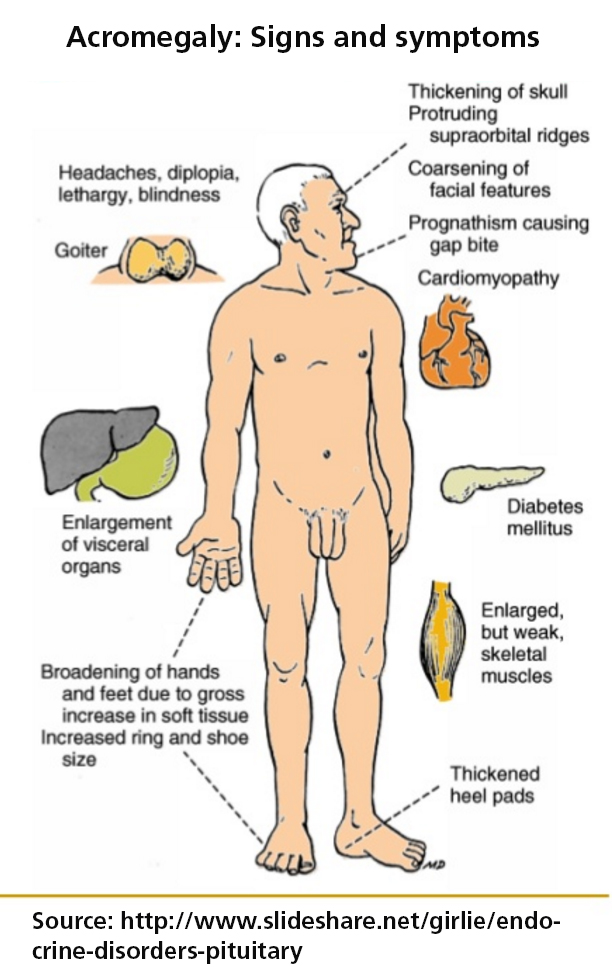
❀Excess growth hormone (GH) in acromegaly can lead to insulin resistance.
❀Many patients with acromegaly will exhibit impaired glucose tolerance and hyperinsulinemia.
❀Additionally, acromegaly may result in dyslipidemia, affecting lipid levels in the blood.